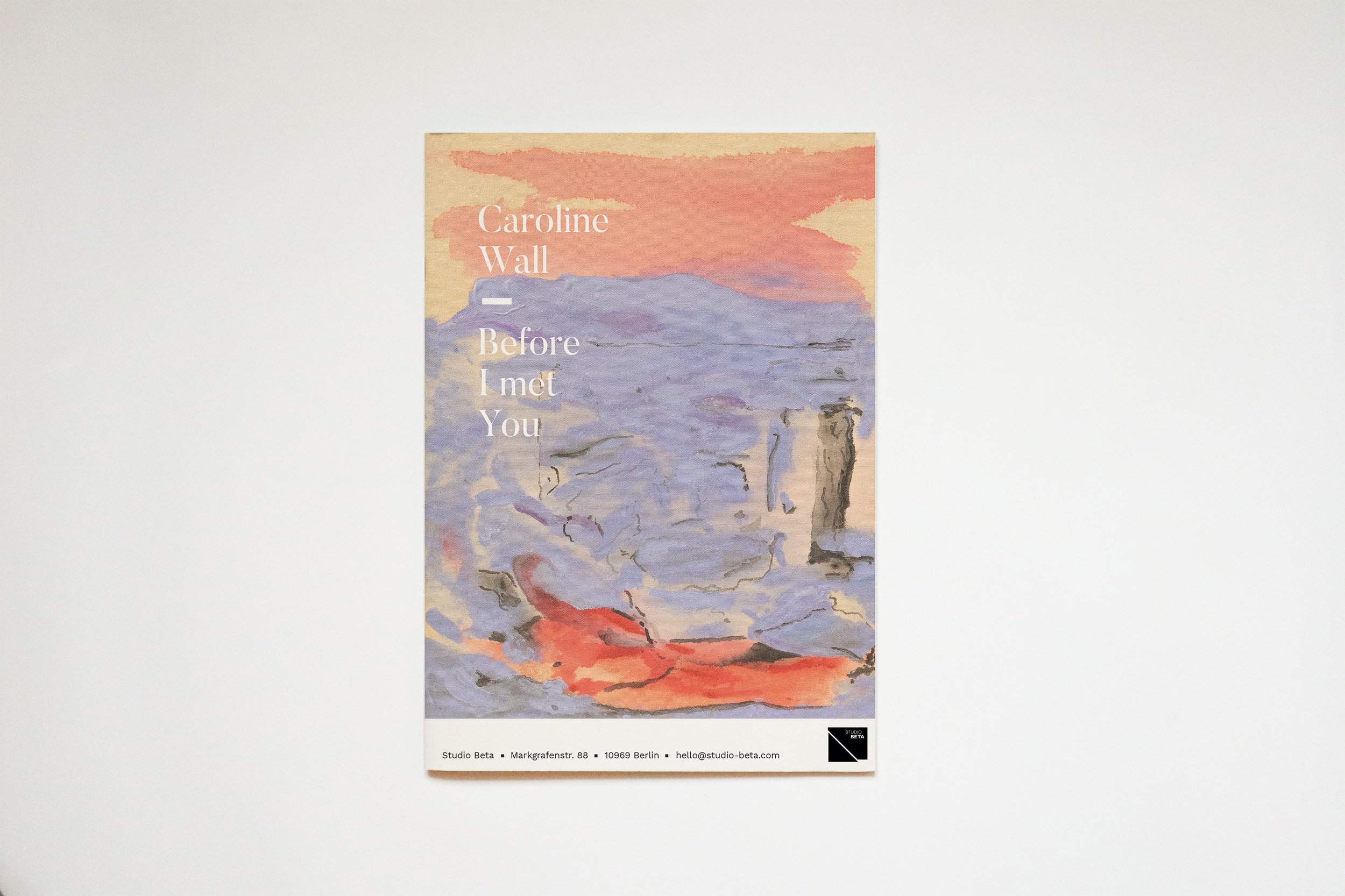
Coming up: Tobias Molitor
Tobias Molitor is a multidisciplinary artist and printmaker who lives and works in Berlin. His work focuses on everyday products and traces of usage, which are often perceived in the subconscious. His oeuvre comprises everyday objects like plastic bags, packages, chewing gum, receipts, postcards and others, including graphic elements which sometimes give an allusion to the cultural context and Zeitgeist.
Tobias Molitor
<
Tobias Molitor <
Studio Beta | Exhibition Catalogues
| 20.11.2021
Protegida, by Rafaella Bragga
The exhibition consisted of new paintings, sculpture and installation. This new body of work comprises materials and techniques that the artist has incorporated into her practice throughout the years since her move from her native Brazil to Berlin.
The cavernous concrete interior of the gallery is transformed into an intimate, contemplative space where colorful canvases sprawl across the walls and a full-ceiling installation trickles down into the gallery. The viewer’s gaze is guided through different compositions and objects, each one a different expression of the young artist’s evolved painterly, sculptural and immersive language.
-
Art fairs are the stage on which the art world meets, and presents the carefully crafted programme for the year ahead. There are a few thousand art fairs, but the important fairs are these huge gatherings with hundreds of the world's best galleries showing alpha art works, the sale of which are the bread-and-butter on which the gallery survives.
You and I can buy a ticket to a public day, but the real art world lives behind closed doors. Sales are made on the two VIP preview days, to which you have to be invited, and important sales often happen outside of business hours at special dinners or private parties hosted in celebration of an artist or on the occasion of the fair.
Admission to the fair is won on the merit of a gallery's meticulously crafted presentation - however there is a considerable social element - an example of the art world reflecting life, as it's not what you know, but who you know know after all...
click here to watch! -
Museums may not be your favourite childhood memory, but they are very important to the art world.
Museums traditionally manage an expensive collection of artworks, artefacts or objects, to preserve them for public view, and for academic research. Exhibitions at museums almost never include artworks that you or I could buy, which is the big difference between an art museum and a commercial gallery.
But when a museum buys an artwork, it is a cause for celebration. That sale elevates the status of the artwork, and of the artist themselves. What is less celebrated is the large amount of art that is kept in storage, the home of artworks that don't hang on the walls…
-
It is a gallery's business to represent artists in a commercial way - They act as a PR agency to communicate with the rest of the art world on their artist's behalf, and to sell artworks.
But a gallery doesn’t just sell art, a gallery also protects artworks; physically, legally, and digitally to ensure art is well preserved for the future. The forward facing part of a gallery business is the ever-changing roster of exhibitions which the public are invited to view.
If you're lucky, you may be invited to an afterparty that the gallery organises, either a cocktail, or a dinner in honour of the exhibition. At the top end of the artworld these events are strictly planned - and very elite. There are only three, or maybe four commercial galleries at the very top of the art world, and they tower over the rest...
-
If art is the life blood which courses thought the veins of the contemporary art world, then collectors are the heart that pumps artists to significant success. Big collectors can afford big art, the prices of which can soar astronomically at the height of an artist's career, and upon an artist's death. Much of the art these wealthy individuals collect are stored in special, climate-controlled warehouses, or in tax free storage facilities called 'freeports'.
Anyone can collect art for any number of reasons; because they find it beautiful, because they discover a personal connection, or because they consider it a good long term investment. Collectors who buy art in order to immediately sell and turn a quick profit are called 'flippers'. And like a penguin, though they may look smart in their tuxedo, the flippers don't really fly in the art world…
| Critical Tendencies: Artworld 101
Critical Tendencies: Art World 101, is a series of video essays that chronicles the stories of the key players and institutions at the pulse of the world of contemporary art today.
Written by Jonathan Ferguson, Video by Alejandro Parilli, Sound by Federico Beckhoff.
| Open Beta
In software development, beta versions are the first points of interaction between programs and humans, and they can either be public (open) or private (closed). Open betas are both a showcase and a trial run for new, innovative projects. Our first group exhibition, Open Beta, is a celebration of experimentation and resilience, exploring different ways in which the creative process is a path of transformation.






